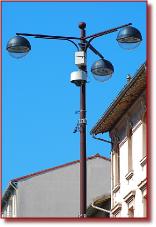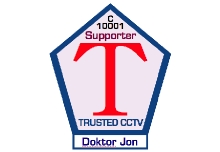 |
||
 |
||
![]()
![]()
![]()
![]()
![]()
![]()
![]()
![]()
![]()
![]()
![]()
![]()
![]()
![]()
![]()
![]()
![]()
![]()
![]()
![]()
![]()
![]()
![]()
![]()
![]()
![]()
![]()
![]()
![]()
![]()
![]()
![]()
![]()
![]()
![]()
![]()
![]()
![]()
![]()
IMPORTANT: No material may be reproduced, copied or redistributed from this site, without the express written consent of doktorjon.co.uk
All the detailed information on this site is provided in good faith; and as such, Doktor Jon does not accept responsibility for any consequential loss, injury or disadvantage resulting from any individual or organisation acting on the details contained herein.
© doktorjon.com 2004 - 2012
![]()
![]()
![]()
![]()
![]()
![]()
![]()
![]()
![]()
![]()
![]()
![]()
![]()
![]()
![]()
![]()
![]()
![]()
![]()
![]()
![]()
![]()
![]()
![]()
![]()
![]()
![]()
![]()
Please Note - Doktor Jon is currently upgrading his site, so you may see some layout changes on various pages, whilst the work is in progress.
Hopefully, the complete re-design and improvements, should be completed during 2012.
Video Recording Quality
First off, it's important to consider that whilst a video recording system will usually be purchased on the basis of a specific requirement, it should also be capable of fulfilling any secondary objectives, which may at the very least be equally if not more critical, than the primary purpose itself.
A simple example might be a camera located outside a retail shop, which may primarily be required to deter any damage to the property, but may equally be capable of providing a vital Forensic Surveillance capability, in any subsequent terrorism related investigation.
With this in mind, the recorder must be given adequate consideration and sufficient allocation of funding, if it is to fulfil a range of useful purposes.
With very few exceptions, the recorder should always be set up to record at a resolution setting, that most closely matches or exceeds the performance of cameras being used. In most situations, this will be either 4CIF or D1, although MegaPixel cameras will require a much higher record quality dependant on their specific capability.
Generally speaking recorded resolutions lower than 4CIF should not be used, although in specific 'low risk' circumstances, for example a camera monitoring the status of a fire exit door, then 2CIF may be considered adequate for the purpose.
It's perhaps also worth mentioning that adjusting record resolution to a high setting, requires that the individual camera is actually recorded in isolation, and not with others on the same 'channel' - so for example if channel 3 on the video recorder (DVR) is set to 4CIF but it's receiving a video feed from an external 'Quad' multiplexer carrying four seperate camera signals, then each individual quadrant is in effect only being recorded at CIF resolution (i.e. 1/4 size) which is pretty useless in terms of providing images that are suitable for evidential purposes.
Whilst the ideal frame rate (also often described as "images per second") can vary depending on the location (and a number of other factors), most recorders will be set to capture between 5 and 25 images per second, per connected camera. To meet the requirements for continuity of evidence, "triggered" or time managed recording must in most situations be avoided, and likewise the use of Video Analytics should generally be limited to monitoring applications, rather than recording management, where vital evidential images may not be captured using this advanced technology.
The video 'compression' must not be turned up ( I.e. reducing the overall image quality) simply to squeeze down individual image file sizes, and therefore increase the length of recording that can be stored on a hard disk - adequate drive space should always be budgeted and deployed, to make sure that only the highest quality images are recorded and stored for a period, that is most appropriate for all primary and secondary operational requirements.
One recent innovation which is most definitely not recommended for video surveillance, is the automatic degrading of recordings over a period of time (either by reducing resolution or increasing compression). It is a false economy, and a practice which undermines the fundamental basis for producing Forensic Surveillance images in the first place. If data storage is a significant issue (usually due to cost), it would be preferable (although not ideal) to reduce the number of recorded images per second, rather than tampering with the primary recorded quality.
It's perhaps also worth quickly mentioning that in terms of evidential video record quality, what you end up with isn't necessarily always what you thought you had. Many recorders, particular lower end units, will apply further compression to a recording when it is exported to removable media, like for example DVD or a Memory Stick. This is a particular issue for Forensic Video Analysts who always need the best possible video quality, to help assist with criminal investigations.
On the simple basis of KiSKiS ( Keep it Sweet, Keep it Sharp), the next vital consideration is just how long should recordings be retained under any given circumstances? The following page will hopefully give some indications as to what would be considered acceptable, in a range of everyday situations. Over a period of time, this will be gradually increased to account for additional operational profiles ....
Example Video Recording Retention Periods for "TRUSTED"© Compliance >>

How long should CCTV recordings be
retained in order to be considered
compliant with the objectives of
'TRUSTED'©
Looking at the often controversial subject of CCTV Data Retention, there are often different schools of thought as to what is or isn't acceptable.
Here Doktor Jon provides some general guidance on what should be considered as an acceptable approach for a "TRUSTED"© Video Surveillance video recording system.





